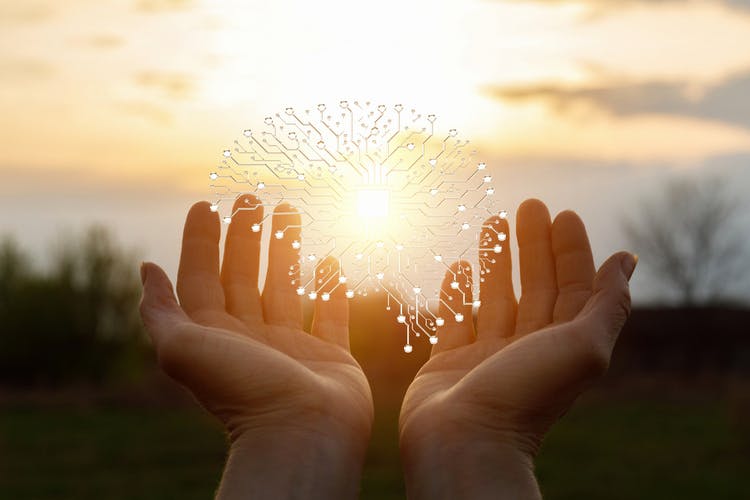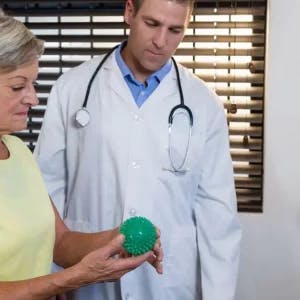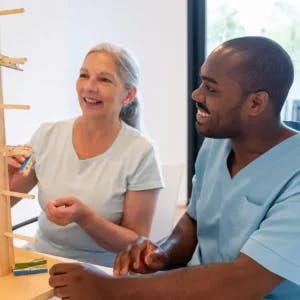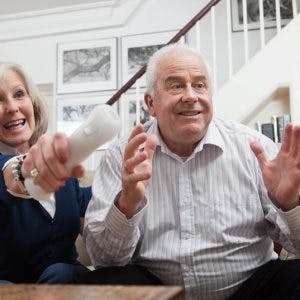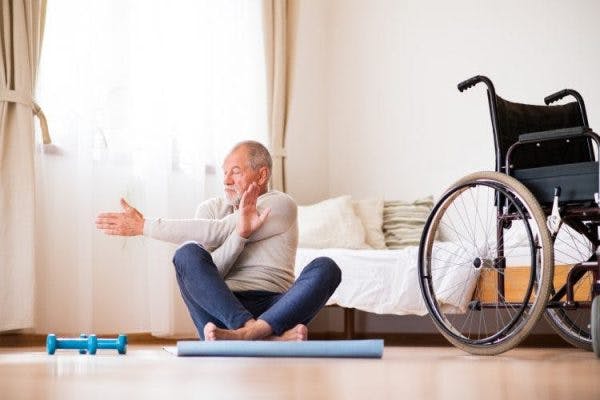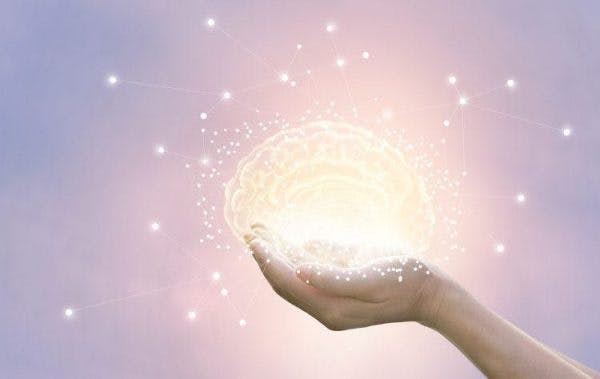While traditional rehabilitation can kickstart recovery, some survivors may experience additional benefits by pursuing less conventional treatment options, such as magnetic therapy for stroke patients. Research has shown that magnetic therapy, also known as repetitive transcranial magnetic stimulation (rTMS), may have the potential to improve various secondary effects of stroke.
This article will provide further details about magnetic therapy and its benefits. Use the links below to jump directly to any section:
- What is magnetic therapy?
- How magnetic therapy for stroke works
- Benefits of magnetic therapy
- Who can participate in magnetic therapy?
What is Magnetic Therapy?
Magnetic therapy, also referred to as repetitive transcranial magnetic stimulation (rTMS), is a type of non-invasive brain stimulation designed to influence the brain’s natural electroactivity. During treatment, magnetic coils placed on the patient’s scalp send short electromagnetic pulses to specific brain areas. These pulses can reach deep into the brain to send electrical currents to stimulate targeted neurons.
The average adult brain contains approximately 86 billion neurons, which communicate with each other through a combination of electrical and chemical signals. When stimulated, electrical impulses move through the neuron, prompting the release of chemical messengers that can influence the electrical activity of adjacent neurons. Damage to the brain due to a stroke or other neurological conditions may disrupt this process, resulting in messages being transmitted inaccurately or not at all.
Currently, transcranial magnetic stimulation is FDA-approved to treat only a few conditions, including obsessive-compulsive disorder, migraines and depression. However, evidence suggests that rTMS may be an effective treatment for other conditions, including many secondary effects of stroke.
How Magnetic Therapy for Stroke Works
The effects of magnetic therapy differ depending on the type of electromagnetic pulses that are administered. Research shows that high-frequency rTMS can cause targeted areas of the brain to become more easily activated, while low-frequency rTMS can make these areas more difficult to activate.
When neurons in the brain are activated, they can engage a natural phenomenon known as neuroplasticity. This allows the brain to adapt by creating and strengthening neural pathways that are stimulated consistently, while diminishing pathways that are rarely used.
Magnetic therapy can enhance neuroplasticity, making it easier for the brain to create strong adaptive neural pathways and to weaken or eliminate pathways that are maladaptive. This can be done by stimulating multiple areas of the brain. In fact, some studies have found that it can be beneficial to stimulate both the affected and nonaffected sides of the brain for optimal improvements.
This is because each side (hemisphere) of the brain has distinct functions. For example, the portion of the motor cortex located in the right hemisphere controls movement on the left side of the body, while the left motor cortex controls movement on the right side of the body.
If an individual has weakness on their left side, they likely sustained damage to their right motor cortex. In this case, high-frequency rTMS could be used to promote activation of the right motor cortex where stroke damage occurred, while low-frequency rTMS may be used in the unaffected left side of the brain to suppress its activation.
While participating in physical, occupational and/or speech therapies can promote neuroplasticity, rTMS can serve to prime the brain for optimal improvements. Therefore, to maximize the benefits of transcranial magnetic stimulation, it is often recommended to be completed in conjunction with more conventional therapies.
Benefits of Transcranial Magnetic Stimulation
Due to its ability to enhance neuroplasticity, magnetic therapy can have numerous benefits for stroke survivors. According to the International Federation of Clinical Neurophysiology, research suggests that:
- Applying low-frequency rTMS to the unaffected hemisphere’s motor cortex can improve motor functions in the hand
- Administering high-frequency rTMS in the affected area of the motor cortex is likely to enhance motor recovery
- Using low-frequency rTMS in the right inferior frontal gyrus is likely to improve chronic non-fluent aphasia (language difficulties)
While most research has focused on the above areas, there is some evidence that magnetic therapy may also help with other secondary effects of stroke. In fact, a 2023 study from the American Stroke Association found that rTMS may improve:
- Coordinated movement of the arms
- Muscle strength
- Standing balance and transfers
- Cognitive functions and memory
- Visual and spatial attention
- Communication
- Independence with activities of daily living
Although magnetic therapy is not yet widely recommended by stroke experts, there is a growing body of research supporting its use. Further benefits of rTMS include that it is non-invasive and painless, although it may be difficult to access.
Who Can Participate in Magnetic Therapy for Stroke Recovery?
Magnetic therapy can be a beneficial option for boosting stroke recovery, but it is not appropriate for everyone. Potential contraindications for rTMS include:
- Implanted metal devices, especially in the brain
- History of seizures
- Pregnancy
- Other medical or mental health conditions
Although most individuals do not experience adverse side effects, some may experience scalp discomfort, headache or lightheadedness after treatment. Rare but serious side effects include seizures or possible hearing loss. As with any treatment, it is always best for survivors to discuss the benefits and risks with their medical team before beginning treatment.
While some clinics and hospitals offer rTMS for stroke recovery, survivors may have better luck accessing rTMS by searching for clinical trials in their local area. Since magnetic therapy for stroke patients is not yet fully approved, it is typically not covered by insurance. Therefore, participating in a clinical trial, specifically one focused on stroke recovery, may be a more affordable option.
Understanding Magnetic Therapy for Stroke Patients
Magnetic therapy can be an excellent treatment option for survivors after stroke, especially for those who have hit a plateau in their recovery. The magnetic stimulation can potentially give the brain a significant boost in plasticity, allowing survivors to continue making progress.
However, as with all stroke treatments, optimal recovery requires consistent practice. While magnetic therapy can be a powerful tool, improvements will likely be limited without regular participation in therapeutic exercises and activities. Interested individuals should talk with their medical team about whether magnetic therapy may be an effective and accessible treatment to promote recovery.

